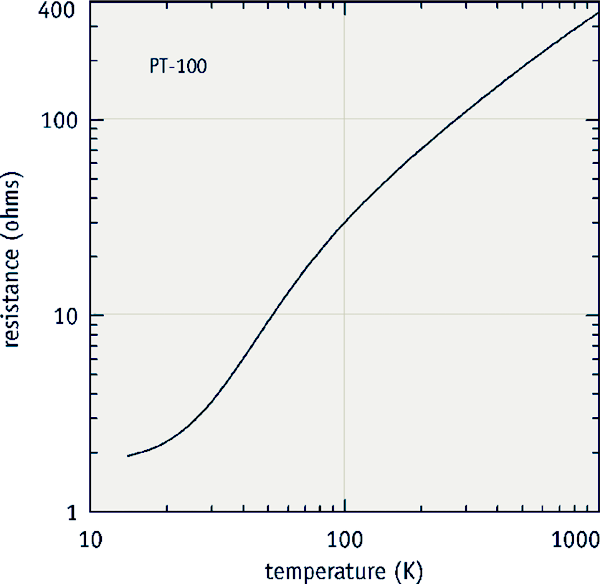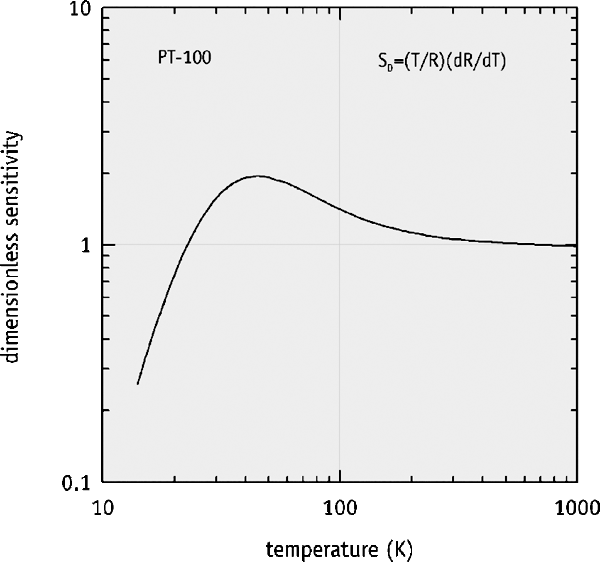Platinum sensor applications
PT-100 platinum resistance thermometers (PRTs) serve an important role in both cryogenic research and industrial cryogenics applications.
Research
Many cryogenic research platforms also include high-temperature capabilities, extending hundreds of degrees above room temperature. These platforms need temperature sensors that can both measure and survive these extreme temperatures. With a useful temperature
range of 14 to 873 K, platinum sensors are invaluable for this application.
Note: Platinum sensors lose sensitivity below 14 K. For temperatures below this, please see the sensor selection guide, as there are sensor options for lower temperatures, though there are none that can also exceed a 500 K maximum temperature.
Production and transport of liquid cryogens
The production and transport of many liquid cryogens (liquid nitrogen in particular) often see platinum sensors as the sensor of choice for temperature monitoring. Their bolt-down package option and interchangeability
options allow multiple sensors to be used with a single temperature curve, making them simpler to implement and maintain.
Typical platinum resistance

Typical platinum sensitivity

Typical platinum dimensionless sensitivity
